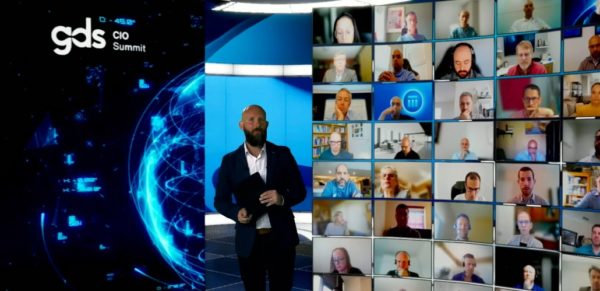In our quest to better optimize our workplaces, AI has become a strategic priority for many senior technologists and leaders. Consequently, you’ll be hard pressed to find a business that doesn’t make use of AI in some way in 2022. However, according to Gartner, in 2022, 85% of AI and machine learning projects will fail to deliver. This is often the case when integrating new technologies. With this in mind, are there alternatives that we should consider before investing further?
Increasingly, yes. In recent years, we’ve seen a number of industry leaders lean on augmented intelligence to help determine future success. Critically though, how does augmented intelligence differ from artificial intelligence and how can it bolster our operations in the day-to-day? First though, lets define what exactly we mean when we refer to AI.
What is Artificial Intelligence?
Artificial Intelligence refers to a machine’s ability to effectively mimic human thinking, thereby appearing to learn/think in the process. Typically, this technology is used in robotics or on digital computers to expedite repetitive tasks and give staff more time to focus on high–priority tasks.
Types of Artificial Intelligence
1. Reactive Machines: As the earliest iteration of the technology, reactive machines are the most technologically limited of modern AI systems. As their name suggests, these systems receive external stimuli and react accordingly. Perhaps the most famous reactive machine is Deep Blue, IBM’s chess-playing supercomputer.
2. Limited Memory: Equipped with the responsive capabilities of reactive machines, limited memory systems are also able to learn from historical data to make decisions. As well as this, they are the most familiar to us with practically all modern AI systems sitting in this category. Chatbots, virtual assistants, self-driving vehicles – all of them are limited memory.
3. Theory of Mind: Theory of Mind represents the next stage for AI with technologists already engaged in its creating. Focused on discerning the emotions, beliefs and thought processes, Theory of Mind aims to understand human needs more efficiently. Further development is required across all branches of AI to bring this to life, but it is on the horizon.
4. Self-Aware: Currently reserved to the world of science fiction, the concept of self-aware Artificial Intelligence is currently, purely hypothetical. At this stage, an AI would possess emotions, needs, beliefs, and even desires of its own. Essentially, it would exist as a fully autonomous being capable of helping and potentially even, hindering humans.
What is Augmented Intelligence?
Augmented Intelligence describes the point at which natural and artificial intelligence intersect. An alternative conceptualization of AI, augmented intelligence opts to use AI but bolsters it with human emotional and intellectual reasoning. Also referred to as intelligence amplification (IA), augmented intelligence recognizes that AI was never intended to replace humans, but enhance them instead.
Why Augment Our Intelligence?
Similar to robotics, there are still many who see artificial intelligence as our inevitable replacement, but this isn’t the case. Though the majority of businesses today make use of AI, we must still be critical of the results it produces. Just because an AI can sift through data and trends faster than we ever could, it does not mean that it is doing so efficiently. More so, it certainly doesn’t mean that it understands it.
To the AI’s that we employ today, data is binary – patterns that it has been taught to interpret from historical data. To us, the 1’s and 0’s on the page don’t represent numbers but individuals, people that we want to engage. Humans are better at understanding humans than any modern AI and as such, we can speak to any decision motivated by emotion with greater accuracy. This is why it’s important for us to scrutinize and work in tandem with the AI’s we employ.
Augmented Intelligence Use Cases
There are already several high-profile examples of the augmented intelligence approach being utilized in business, here are just some of them:
· Coca Cola – Utilizing AI-driven image recognition technology and augmented analytics, Coke wanted to better understand how their products were mentioned and represented on social media. By augmenting their intelligence in this way, they were able to optimize how they served ads as well as boost their clickthrough rate by four times.
· Ryanair – By making use of its customers’ personal preference data, Ryanair have found that they are able to offer more targeted services and suggestions to customers. For instance, for an adult travelling with two children, hire cars can be advertised.
For those looking to provide a better, more compassionate service, there is obvious value in augmented intelligence. No technology is ever foolproof so for the removal of any doubt, we must augment our intelligence to drive results.
GDS Summits are tailored 3-day virtual events. In them, we bring together business leaders and solution providers to accelerate sales cycles, industry conversations and outcomes. Regarding the CIO Summits 88% of Delegates said the overall experience was either Above Average or Excellent. 92% of Delegates said the Digital Summit provided them with actionable outcomes to support their current initiatives.
For more, click here to hear from attendees on how GDS has helped them to achieve their business outcomes.
Continue the debate at GDS’ CIO Summits. Only we bring together senior IT executives who are actively seeking to share, learn, engage, and find the best solutions.
Apply to Attend












